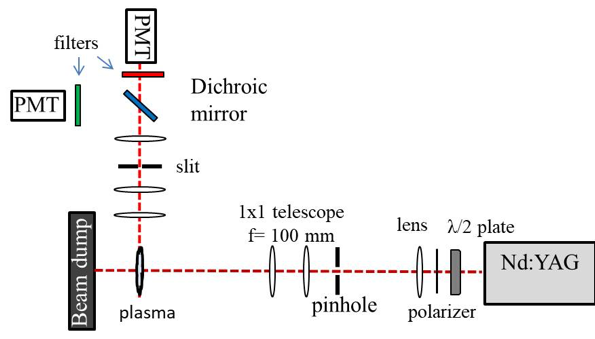Laser-Induced Incandesence (LII)

Laser-Induced Incandescence is a technique in which a short-duration (nanoseconds) laser pulse heats nano-sized particles to high temperatures and the subsequent incandescence is observed. The incandescence allows the detection of the particles, but comparison of experimental signal and modeled incandescence as a function of time also provides the size distribution of the particles. The modeling of LII signal is performed by a model of heat transfer mechanisms in the arc vicinity, including laser absorption, conduction, sublimation, radiation, thermionic emission and finally the heating by radiation from the plasma . Two variants of LII are used - time-resolved LII (TR-LII) and planar LII (pLII). In pLII, images of the incandescence signal provide spatially resolved detection of the presence of nanoparticles. In TR-LII, modeling of the time evolution of the incandescence signal is used to calculate the size of the particles. The TR-LII detection limit is evaluated using the approach described in Ref. , amounting for particle number density of 108 cm-3. The LII measurement will utilize the Quantel Ultra 100 mJ laser, providing 8 ns FWHM laser pulse at 1064 nm wavelength, with maximum energy of 100 mJ. The detection of the signal employs Hamamatsu photomultiplier tube. LII approach works in both low pressure and temperature and high-pressure, high temperature plasmas.